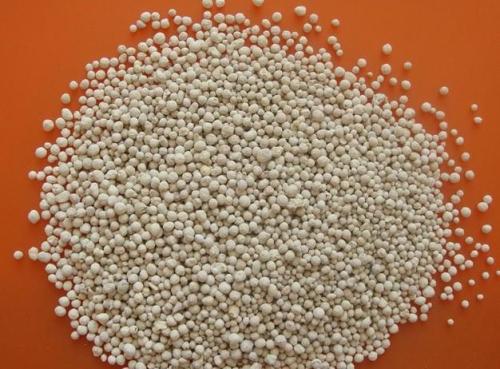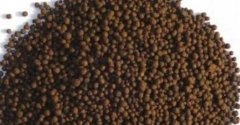Chemical fertilizer knowledge: the types and functions of chemical fertilizer, the advantages and disadvantages of chemical fertilizer
Is the chemical fertilizer easy to use? Now chemical fertilizers are not very popular, and now they are talking about organic fertilizers. What are the advantages of chemical fertilizers?
Chemical fertilizer is a source of pollution: the application of a large amount of fertilizer to farmland is bound to have a great impact. Chemical fertilizers are usually salts or compounds with accompanying ingredients in addition to the essential elements in plant nutrition. Individually or collectively, directly or indirectly, they may constitute a polluting impact on the soil and the environment; of course, the so-called organic fertilizers are no exception:
1. All nitrogen fertilizers are sources of pollution.
two。 Now the imported potash fertilizer is almost potassium chloride refined salt, but chlorine is the source of pollution.
3. The imported phosphate rock is selected after strict inspection, and the calcium superphosphate basically does not constitute a pollution source.
4. Fertilizers with all trace elements are dangerous sources of pollution.

Chemical Fertilizer and Modern Agriculture
Modern agriculture requires high yield per unit area and good product quality. in order to achieve this goal, the physical conditions and nutrient supply of farmland must be able to fully meet the needs of crops. Physical conditions depend on ploughing, while nutrient supply depends on soil fertility, fertilization and irrigation, but the supply of nutrients in the soil may not fully meet the growth needs of crops. In general, the supply capacity of nitrogen, phosphorus and potassium in general soil is not sufficient, especially almost all cultivated land is lack of nitrogen; some problem soils may also lack one or more trace elements, the supplement of these nutrients can only be achieved by the application of chemical fertilizers, because nitrogen, phosphorus, potassium and other plant nutrients are chemical elements, chemical elements can not be made. Without learning fertilizer, modern agriculture cannot be realized, and chemical fertilizer must be applied in modern agriculture. So far, chemical fertilizers are still the first major chemical industrial products in the world. In recent centuries, the improvement of nutrition and health is really due to chemical fertilizers, which have contributed to the production of a large number of high-quality food and generally prolong human life. Chemical fertilizer does a lot of work, but calling it "chemical fertilizer" is its original sin, unrewarded and criticized. People think that natural organic fertilizers will be better, in fact, whether chemical fertilizers or organic fertilizers, the nitrogen, phosphorus, potassium and other nutrients can have the same positive or negative effects.
III. Environmental pollution caused by fertilizer application
1. Nitrogen fertilizer:
In soil, ammonia nitrogen fertilizer and organic fertilizer are initially absorbed by ammonium ion supply crops, and part of ammonia is oxidized to nitrate by nitrifying bacteria as energy. The nitrate which is not absorbed by crops may be leached and pollute the groundwater. The nitrate lost by the soil is bound to take away calcium and magnesium plasma, resulting in soil acidification. Part of the nitrate may be used by bacteria to breathe, the so-called nitrogen fixation. Some of them are only reduced to the degree of N2o and escape into the atmosphere, causing air pollution.
two。 Potash fertilizer:
Nowadays, when a large amount of potassium chloride is used, the dissociation degree of potassium in the soil is very low, but when the chloride ion is to be removed, it is bound to take calcium and magnesium ions along with it; therefore, the application of potassium chloride will inevitably lead to additional acidification of the soil. Soil acidification has been going on in nature since ancient times. Acid comes from carbonic acid, nitric acid, such as red soil formation, and acid from organic matter, such as lime soil formation.
3. Trace element fertilizer:
Iron, manganese, zinc, copper and molybdenum are heavy metals, and improper use of heavy metal salts will cause accumulation. Trace element fertilizers are serious pollution sources, for example, sugar beets need more boron, such as applying a large amount of borax to accommodate sugar beets, it will cause excessive boron bias and make the soil unsuitable for cereal cultivation. Therefore, the application of trace element fertilizer should be strictly controlled.
IV. Environmental pollution caused by chemical fertilizers and its prevention and control
The application of fertilizer is an inevitable "necessary evil" in modern agriculture, which puts us in a dilemma. As the saying goes, "it is impossible for a horse to grow well and not to eat grass." Crops need fertilizer to grow well, but fertilizer is a source of pollution; therefore, the only feasible way to apply fertilizer is to reduce the relative impact to the minimum. Heavy use of fertilizers can increase crop yields and usually improve quality, but during crop growth, nutrients that are not absorbed and utilized by crops will have a serious impact on the soil and the environment. Therefore, the ideal principle of fertilization is that all fertilization measures should be done according to this basic principle in order to make all the fertilizers used be absorbed and utilized by crops. To this end, the approaches now adopted are roughly as follows:
1. Improve the physical and chemical properties of fertilizer
two。 Control the amount of fertilizer used
3. Improve the application method of fertilizer
4. Application of lime to adjust soil response
Take nitrogen fertilizer as an example to illustrate:
Urea is the most commonly used nitrogen fertilizer at present. Urea is easily soluble in water and is quickly hydrolyzed into ammonia in soil, which is quickly oxidized to nitric acid. To slow down these reactions, urea is often made into large particles, wrapped in sulfur, and nitrification inhibitors are added. Basically, this change in physical and chemical properties is equivalent to the continuous application of a small amount of urea, in order to make the fertilizers applied will be absorbed and utilized by crops, but when the application is too much, there will always be a lot of nutrients left, and the more they are applied, the greater the impact on the environment; therefore, another measure is to control the amount of application. In Germany, 30 tons of fertilizer per hectare is applied in the first year, but less is needed in the second year, and it is not allowed to be used in the third year, and it is not allowed to be used after the autumn harvest, mainly to prevent nitric acid from seeping into the groundwater. In Taiwan, when large granular urea is used in rice fields, this application method can reduce the amount of application and increase the utilization rate. All these methods are in fact oriented towards the ideal principle of making fertilizers absorbed and utilized by crops. Finally, after long-term application of fertilizer, the soil will gradually become acidic, so it is best to measure the soil response after a period of time and add an appropriate amount of agricultural lime to adjust the soil response.
It is important to keep in mind that fertilizers containing heavy metals and trace elements will accumulate in the soil, and the pollution caused is difficult to eliminate. Although organic fertilizer, lime or phosphoric acid can be used to control its activity without harming crop growth, the most fundamental way is to use the minimum amount of fertilizer cautiously.
- Prev

Endophytic mycorrhiza: where does the endophytic mycorrhiza invade the plant? What is endophytic mycorrhiza?
Do you know what endophytic mycorrhizal fungi are? If you want to know about it, take a look at the following introduction. This is a good biological fertilizer. Let's take a look at it. Endophytic mycorrhizal fungi are one of the microorganisms, microbial fertilizer preparation is not fertilizer, but
- Next

What is organic fertilizer? What are the types and characteristics of organic fertilizers?
What are the types and characteristics of organic fertilizers? Do you know? You want to know the following. Come and have a look. The sources of organic matter materials can be divided into two categories: one is farm organic fertilizer, the other is commercial organic fertilizer. The composition of farm organic fertilizer varies a lot, while
Related
- A one-day flower show brings 130 million yuan in orders! Nanhai, this Phalaenopsis exhibition is amazing
- What do the flower language and meaning of Lutheran tree mean? Precautions for planting Lutheran tree
- Encounter Chaoshan Kongfu tea, not without this cup of Phoenix single clump
- The durian market in Vietnam and Thailand is flooded. The price of imported durian has plummeted by 30-40% in a month.
- Shanghai solved the problem of local vegetable supply by planting 80,000 mu of green leafy vegetables.
- Wageningen University has become the best agricultural university in the world for the seventh time in a row.
- The strongest export season of South African grapes is full of challenges, with exports to Russia falling sharply by 21%.
- Sri Lanka is on the verge of bankruptcy, "Tea for debt" Organic Agriculture Revolution aggravates the Food crisis?
- Turning waste into earthworm manure and worm manure into organic fertilizer-A new choice for auxiliary farming
- Organic rice growers shoulder the responsibility of nurturing agricultural talents! Yinchuan Sustainable Farm with Organic Life Camp

